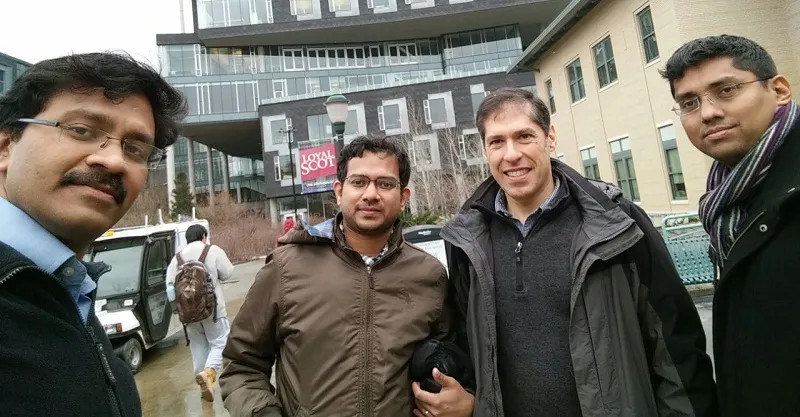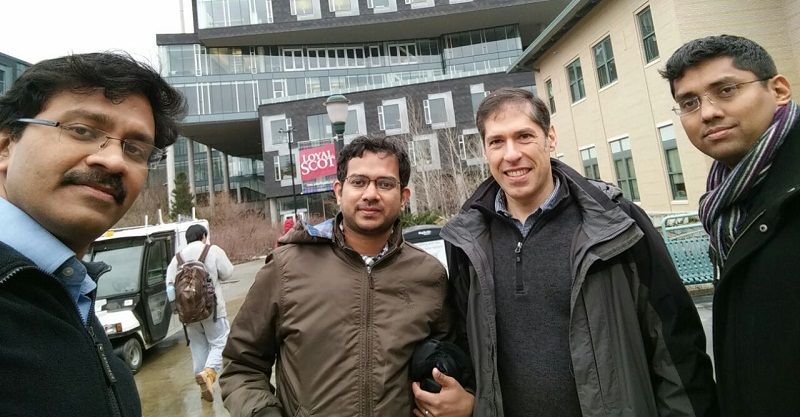Founded within Bosch, how this startup combines the power of machine learning and IoT to change the face of retail
There is a lot of innovation taking root in Indian R&D Centres. For the last six years, Robert Bosch Engineering India Limited (RBEI) has seen its engineers file at least 80 patents per year. They also have an innovation fund that helps the best ideas (generated within the company) to be funded up to a million dollars. But these ideas are for Bosch’s internal applications. But this year even Bosch was surprised that it had four of its senior engineers convincing them that there was an idea that could go to market and win it all. This startup, founded within Bosch, is called “Bezirk” and it has won pilots with retail and consumer facing companies in North America. With its technology this startup hopes to make it big in every region where the smartphone is the centre of the consumer universe.

Bezirk beginning
Last year, something changed when senior engineers at Bosch Hemanth S M and Joao Sousa met each other in Bengaluru. Joao told Hemanth that there was a big opportunity to build a system that could target consumers on a real-time basis in a home environment.
Say, for example, a consumer is using an Internet of Things application installed in his home grille, which connects to an app provided by the manufacturer. The data generated by the grille syncs with the mobile app, which sends targeted updates on retail products and recipes for cooking. While looking at business viability the business development team - of Bezirk in India - realised that retail IoT is also a good market to be in. To make it even more personal, when the consumer goes to a retail store, where the consumer is a loyalty programme member, to pick up some cutlery, the retailer's app will send the consumer targeted ads based on his buying habits at the store and the inputs received from the IoT application during the cooking process. All this is done by software with machine learning and analytics embedded within the networks of the retailer and the IoT application.
This may look over the top, but this crack team of Bosch engineers has made it possible. Hemanth and Joao, along with colleagues Ragavendra Prabhakar and Pavan Govindan, including the team from USA, have founded a startup called Bezirk to go berserk on targeting consumers across all retail segments.
The business
It took Hemanth and Joao seven months to convince the Bosch senior management that their idea worked. By February 2016, the global management of Bosch, along with Vijay Ratnaparkhe, the MD of RBEI, reviewed a business plan presented by the four team members and gave a go ahead to the startup. They were impressed with the team's go-to-market strategy for the US and international markets.
They were so impressed by this software play that the Bosch management told the team that Bezirk could either raise money - after three years of operations - from the outside or be acquired directly by Bosch. More importantly, the startup would receive millions of dollars in funding to scale its business.
The Bezirk team did not waste any time. They hired a team of 30 data engineers and scientists to build the software platform. "Our product is scalable because it has no hardware," says Hemanth.
By April 2016, the team began pitching the idea to retailers in the US over plugging CRM data onto the Bezirk platform. Bezirk is embedded in the app of the retailer, which triggers a personalised advert whenever the customer walks into the store. The data is captured through algorithms that match customer loyalty data with data generated by the app.
"Retailers send too many unwanted ads, and it puts the customers off. The idea was to increase conversions by understanding the consumer," says Ragavendra.
The competition and the future
The team started a pilot in ten stores of a large retail chain in Midwestern USA and a few retail stores of a petrol station in the same region. Bezirk plans to scale up from the current pilot of 50 stores to 2,000 stores in a year's time. The business model they propose is a revenue share based on conversion or an annual maintenance contract. They can also view the business like an advertiser and charge the business based on a cost per click or a cost per impression model.
These analytics networks have been gaining popularity lately, with the likes of MobStac, SnapBizz, Mobmerry, Xlogix and StockWise trying to crack the market. The business is about using technology to gather insights about the consumer. SnapBizz works with FMCG companies to drive ad inventory in stores and works on a conversion basis. MobStac works with an IoT play and also sends targeted messages over the phone.
SnapBizz has succeeded in raising close to $8 million to scale up its business. All these businesses are yet to break even, primarily because a majority of their business is in India. Only MobStac has a large portion of its revenues coming from global operations.
The team at Bezirk thinks their product is scalable because they have figured out how to make the platform work on 450 phones. They believe they have the marketing bandwidth of Bosch to cross sell the product and the understanding of the consumer. "We believe that a large part of the future is the link between the physical and digital worlds," says Hemanth.
Gartner Inc predicts the IoT industry to be as big as $14 billion by 2020. But the software for these platforms is already a $14 billion market as of 2016. The team has certainly hit the nail on the head.






